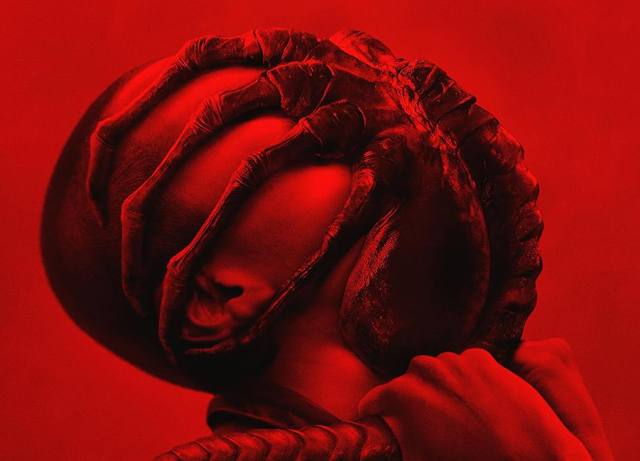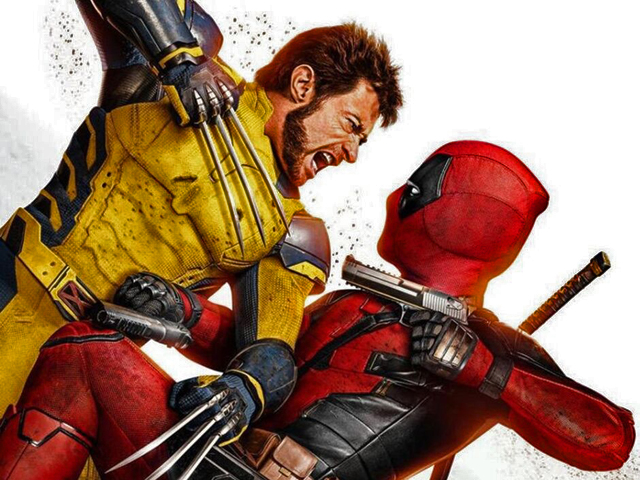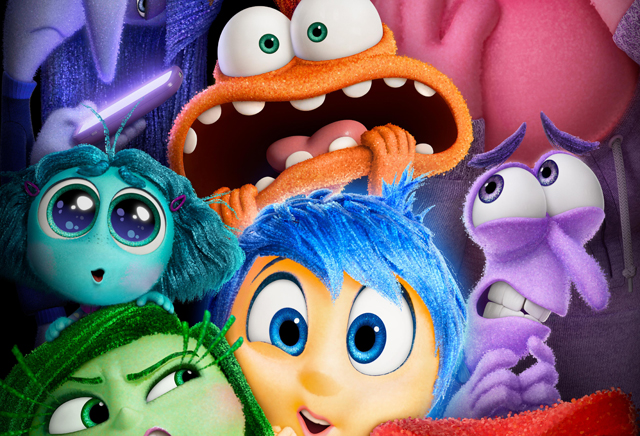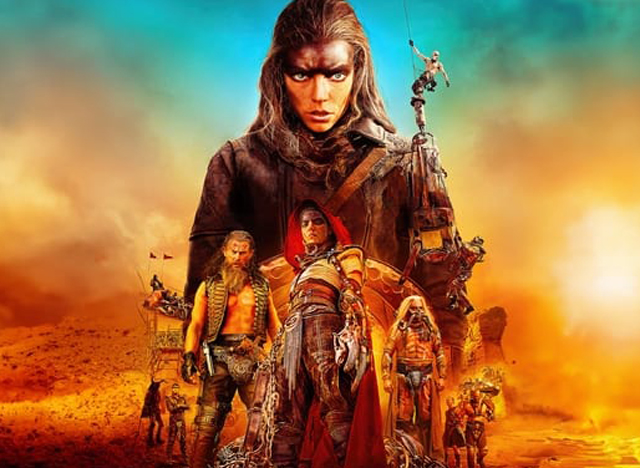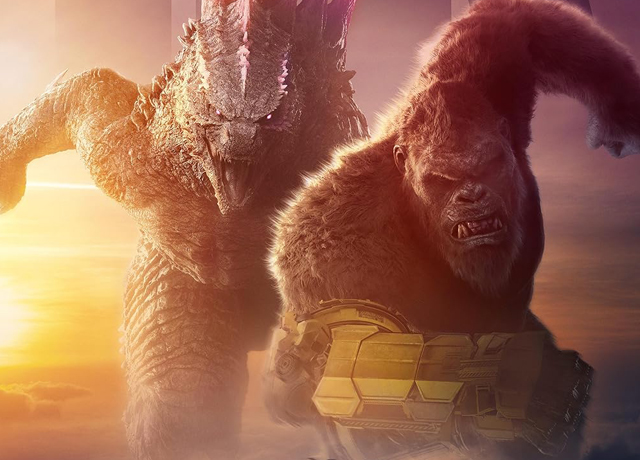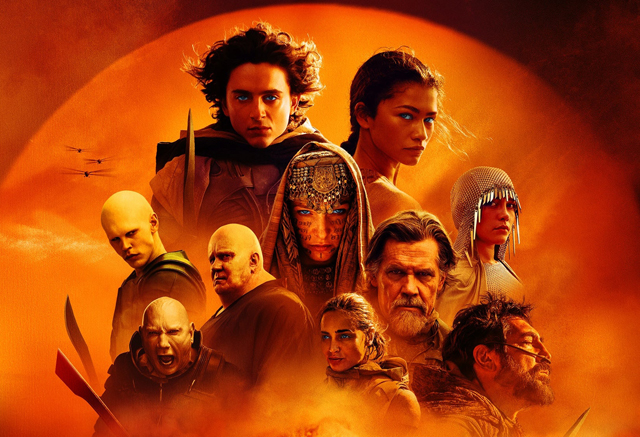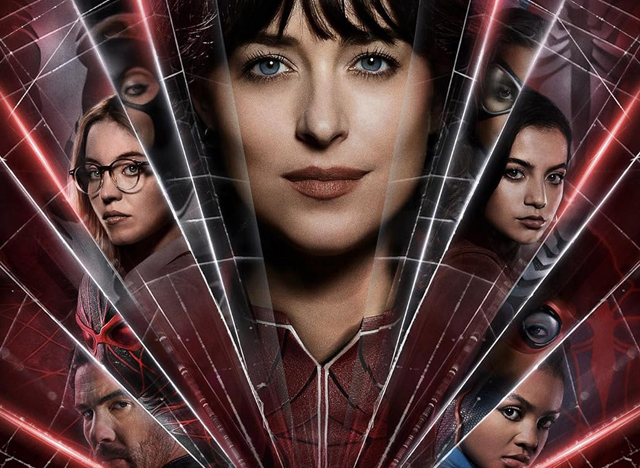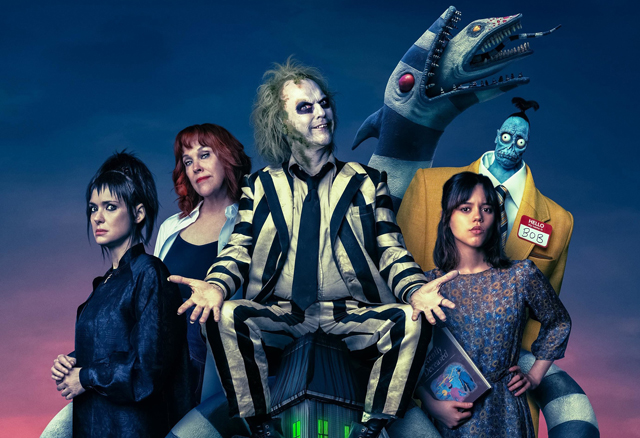
When we look at the whole career thus far of Tim Burton, there is a definable split between the early years and the later years. When Tim Burton was first starting out, he was a unique voice unlike any other in Hollywood. He cut his teeth as an animator at Disney before expanding his talents in the realm of live action film-making. He would get his first shot at directing when LA-based comedian Paul Reubens selected him to make a movie adaptation for his Pee Wee Herman character. Pee Wee’s Big Adventure (1985) certainly showed off the great creative mind that Burton had, but it would be his follow-up that people consider to be the first true Burton movie. Beetlejuice (1988) was a true original. It was bizarre and eerie, but in a way that was still appealing to a mass audience. It was also irreverently hilarious in a way that many movies of it’s kind in the 80’s were too afraid of being. Creating a oddball twist on the haunted house sub-genre, Tim Burton created this imaginative world where life and afterlife intersect. The peaceful serenity of a small New England town becomes a gateway to a strange and otherworldly purgatory with “newly dead” tenants waiting for their turn to be processed through underworld bureaucracy. And at it’s center is a ghoulish prankster who is too much to handle in both realities. The titular “ghost with the most” Beetlejuice features remarkably briefly in the movie (less than 20 minutes), and yet he is the centerpiece of the whole movie. Michael Keaton, the actor who played him, had been around for a while, but Beetlejuice was the character that catapulted him to super-stardom. If Keaton hadn’t shown off his incredible talent as a performer as Beetlejuice, would Tim Burton have had the confidence to cast him as the caped crusader in his next film, Batman (1989), even when everyone else thought he was crazy. Burton would have eventually found his footing as a filmmaker, but because of Beetlejuice, he was able to make a name for himself early without having to compromise his vision, and because of that, Burton movies are a category of their own.
But, like with most other filmmakers, it becomes difficult to try to live up to your own legacy. That’s why the latter years of Tim Burton’s career have been a little more hit and miss. When he was a much hungrier young filmmaker, he was more willing to take chances to prove himself. That’s why that early run of movies feel so creatively vibrant. From Pee Wee, to Beetlejuice, to Batman, to Edward Scissorhands (1990) and Ed Wood (1994), there was a sense of Tim Burton using his talents to transport audiences into another world that only he could imagine. But, the latter half of his career seems to have lost a bit of that creative spark. Movies like Planet of the Apes (2001), Alice in Wonderland (2010), or Dark Shadows (2012) feel more like parodies of a Tim Burton film rather than genuine artistic expressions. As the Burton name has gained it’s reputation, so has the interest of Hollywood in using that to appeal to audiences. And it seems like Tim Burton has become more inclined to bend to Hollywood’s will rather than them bending to his. There are occasional flashes where Burton makes something that he feels genuinely invested in; like the Sweeny Todd: The Demon Barber of Fleet Street (2007) musical adaptation, or the Margaret Keane biopic Big Eyes (2014). He’s also shown an interest in animation that has proved fruitful, going back to his dream project of The Nightmare Before Christmas (1993) and continued through his adaptation of his own live action short, Frankenweenie (2012). But, even still, he’ll still return to the Hollywood machine and make a soulless project like the Dumbo (2019) remake for Disney. But, he recently found renewed creative and commercial success with the popular Netflix series Wednesday, which he produced and directed half the episodes for. The home run that that show turned out to be is giving long time Burton fans hope that he is finding his creative mojo again, which is helping to build anticipation for his next project. And what that project has turned out to be is a long in development sequel to the movie that defined his career from the start; the highly anticipated Beetlejuice Beetlejuice (2024). The only question is whether or not the world is ready to bring this ghoul back from the dead again, or is it dead on arrival?
Set in the present day, decades after the events of the first film, Beetlejuice Beetlejuice catches us up quickly with what has been going on with Lydia Deetz (Winona Ryder). Her ability to speak with ghosts has turned her into a bit of a celebrity, with her own ghost hunting show, produced by her manager and romantic partner Rory (Justin Theroux). Lydia’s show is interrupted one day when she receives the news from her quirky stepmother Delia Deetz (Catherine O’Hara) that her father Charles has died. The news hits her hard, and it also means that she’ll have to return to the home that she thought she left behind years ago. In addition, she has to break the news to her estranged daughter, Astrid (Jenna Ortega) in order to get her to come along. Meanwhile, in the Netherworld, a malevolent ghost with the power to devour the souls of the dead named Delores (Monica Bellucci) has arisen from her exiled imprisonment and seeks to take revenge on the man who killed her; a familiar ghost by the name of Beetlejuice (Michael Keaton). Beetlejuice is desperate to steer clear of his soul-sucking old flame Delores, and he seeks the help of a ghost cop named Wolf Jackson (Willem Dafoe), who was an actor who played cops in his past life. While Beetlejuice is on guard, Lydia finds it hard to balance the new life she has made with the life she once had, as it increasingly begins to intrude more with her return home. Rory is also pushing her to make important life decisions that she is clearly not ready to make, such as getting married, and it’s creating even more of a wedge between her and Astrid. In the midst of all this, she is having traumatic flashbacks to her original encounter with Beetlejuice, to the point where she’s starting to see him everywhere she goes. Is she on an inevitable collision course with Beetlejuice once again, and is it possible that this time he may need her help more than she needs his.
A sequel to Beetlejuice has been in off and on development for over thirty years, and given that lengthy span of time, it’s a wonder that Burton and Company managed to actually get it to finally happen. In many ways, the idea of a sequel seemed to be treated like a joke, with the movie at one point being called Beetlejuice Goes Hawaiian. Obviously that version never happened, and I imagine nothing of that original treatment made it into this sequel, with Tim Burton opting to not stray too far from the original recipe. Beetlejuice Beetlejuice more or less covers much of the same ground as the original, which for many legacy sequels tends to be where they fall apart creatively. Thankfully, this sequel manages to avoid most of the pitfalls that a long in the making follow-up falls into. While Tim Burton is revisiting the same settings of the first film, he doesn’t turn Beetlejuice Beetlejuice into an endless string of memberberries. There are a lot of new ideas thrown into the mix that builds upon the world of the first film rather than just exploiting it for cheap nostalgia. The most pleasing thing about this movie is that it’s the first Burton film in a long while that actually feels like a Burton film. I think this is because he’s not working with an adaptation this time of someone else’s work; like a book adaptation or a Disney remake. This time he’s working with a universe of his own creation and is allowed to expand upon it and even poke fun at it a little. What is especially pleasing is that it shows that Tim Burton is still capable of making a movie like this after a decade or so of feeling like he’s just been coasting on his past glory. Given the special place that Beetlejuice holds in his legacy as a filmmaker, you can see how he wanted to approach this movie with a bit more resolve to get it right, almost like he’s trying to prove himself once again just like he had with the original.
But, this movie is also far from perfect as well. The big problem with the movie is that it’s unfocused. There are half a dozen plots going on in this movie, and Tim Burton doesn’t seem to know which one he wants us to focus on. There’s the Lydia/Astrid storyline, the Beetlejuice/ Delores storyline, a subplot with Astrid getting to know a local boy in town, Lydia’s trauma coming back to haunt her, and a few others thrown into the mix. The problem is that none of those stories intersect in an organic way, and they all keep butting into each other. When one storyline finally hits it’s footing, it will be undercut by another storyline, and in some cases, storyline’s that have potential will suddenly be dropped in favor of another. The movie is missing a traditional three act structure, and is instead a bunch of fun but loosely connected scenes strung together in the hopes that it tells a cohesive story. The biggest problems with this occur when it robs the effectiveness of the character development within the story. Delores for example is a really interesting character, with a fantastic introduction scene. But then she disappears for most of the movie, only becoming an active threat once again towards the end. Too much of the other subplots got in the way of Delores’ development, and it lessens her presence as a villainous threat in the story. The original film may not have been the tidiest of plots either, but it had a consistent through-line in it, with the Maitlands (played by Alec Baldwin and Geena Davis in that movie) being effective audience surrogates whose eyes are the ones we follow along with as they observe the weirdness of Beetlejuice’s world. They were the cornerstones on which the rest of the movie could focus on. This sequel seems to not know which character it should be focusing on; Lydia, Astrid, or Beetlejuice. It’s the thing that makes this movie fall well short of it’s predecessor, even while hitting the right notes when it comes to the visuals and the humor.
One thing that certainly is pleasing to see with this film is the absence of CGI in the effects. It really seems like Tim Burton made an effort to return to his roots with the way he made this sequel. Instead of relying heavily on computer animation to recreate the world of Beetlejuice, Burton instead resorts to old school practical effects that feel like the ones he would’ve used back in his early days as a filmmaker. For one example, the sandworms that make a return from the first film are animated in stop-motion. This gives them a more dynamic presence than how they appeared in the first movie, which was done with puppets and models, while at the same time helping to retain the hand crafted effect that Tim Burton is striving for with this film. There’s also some incredible make-up and puppetry work that help to make the more cartoonish moments of the movie feel genuinely in line with the original film’s low budget charm. But, even with the drive to do everything with practical effects, Tim Burton doesn’t cut back on the scale of his film either. The full practical sets of this movie are expansive and pretty incredible to look at as well. They definitely feel in line with the visual style that we all are familiar with when it comes to Tim Burton. Some of the corridors still retain that off-kilter aesthetic that he’s known for, especially the ones with uneven floors. And you can tell when watching the movie that these are real sets on real soundstages, with the minimalist of green screen enhancements. These Netherworld sets also pair nicely with the actual, on location shooting that they did for the film, bringing a beautiful juxtaposition to the film between the world of the living and that of the dead.
Of course, the thing that matters most is how well the cast is able to perform in this imaginative Tim Burton world. Michael Keaton and Tim Burton go way back, with their shared history obviously going back to the first. And while this isn’t a long in the making reunion between the two, since Keaton had a part in his Dumbo remake in 2019, it is still very pleasing to see these two working together again on a character that matters a lot to both of their careers. Of course, even with the 36 year gap, Keaton doesn’t miss a beat playing Beetlejuice. It’s a part that Keaton, whose in his 70’s now, can still play despite the passage of time, given that the character is literally a decaying corpse. It’s also pleasing that he gets a lot more screen time in this film, though I still believe it’s a lot less than it should be. Winona Ryder also gets to explore a bit more of Lydia’s character this time around. It’s interesting how she is a much different person this time around now that she’s a mother, but at the same time, you still see the rebellious little goth girl underneath the surface. The movie wouldn’t be the same without both Michael Keaton and Winona Ryder both on board, so it is pleasing to see them both say yes to being in this sequel. Jenna Ortega became an audience favorite with her acclaimed performance as Wednesday Addams in the Wednesday series, and it’s nice to see Tim Burton bring her on board this project as well. Unfortunately, there isn’t much to the character of Astrid, other than her being an angsty teen. Jenna does her best with what she can with the role, but Astrid unfortunately is the least interesting character in the movie. The always great Catherine O’Hara consistently steals every scene she’s in here, and it’s great to see her return as well. Her throwaway one-liners may be the highlight of the screenplay all on their own, and she delivers them perfectly. And while stars like Willem Dafoe and Monica Bellucci are sadly sidelined for much of the film, they still bring a strong presence to every scene that they are in. The only actor I feel is wasted is Justin Theroux as Rory. He’s a one-note character that sadly Theroux isn’t able to do much with, and in the end, it becomes an unfortunately underwhelming performance. But, the highlights of the cast are the ones we were all hoping to see return, and Keaton, Ryder and O’Hara all look like they are having a blast being back in this world. Burton certainly likes working with the same people over and over again in his movies, and it’s pleasing to see how far after the fact that his troop of stars are willing to get right back into this quirky world again.
Beetlejuice Beetlejuice is nowhere in the same league as the original film, but it’s not exactly going to reflect poorly on it either. It’s flawed, but still entertaining enough to be worthy of being a continuation of the story. The most positive thing about it is that it’s Tim Burton finding himself once again comfortable with making the kinds of movies that he made in his early career. While I don’t think we will ever see him make a film again that hits the same way that his early films did, this sequel is certainly the closest he’s gotten in quite some time. The movie is very funny in all the right ways, the visuals are distinctly Burton-esque, and there was an effort made to use real, practical effects in the making of this film. All of that is a welcome change from the way Tim Burton was making movies over the last couple of years. We may be witnessing a new, third phase of Burton’s career starting to emerge with this and the Wednesday series. It would appear that Burton is no longer coasting on any big studio gig that he can get (though this film is still certainly that too). He’s now starting to seek challenges again as a filmmaker, and trying to build upon his legacy rather than compete with it. My hope is that he applies some of that renewed creativity into something original. That’s the thing that we have been missing from Tim Burton over the last couple decades; an original concept brought to life on film. Even still, Beetlejuice Beetlejuice should still prove to be an audience pleaser. Michael Keaton slips right back into Beetlejuice’s striped suit just like he’s never left, and it looks like he’s happy to be back, as does Winona Ryder. A lot of things had to happen to make this sequel possible. It helps that both of it’s stars have seen big career comebacks in the last decade, with Keaton earning an Oscar nomination for Birdman (2014) and Winona getting a boost from her role in the hit series Stranger Things. Their hot streak, plus the addition of Jenna Ortega to the mix is almost certain to drive audiences to see this movie in massive numbers. But hopefully, the biggest beneficiary will be Tim Burton, who needs his own Renaissance as a filmmaker. While far from a perfect sequel, Beetlejuice Beetlejuice still delivers enough entertainment that’ll keep this franchise alive and far from dead and buried.
Rating: 7.5/10
